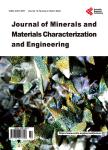Melting Time Prediction Model for Induction Furnace Melting Using Specific Thermal Consumption from Material Charge Approach
Melting Time Prediction Model for Induction Furnace Melting Using Specific Thermal Consumption from Material Charge Approach作者机构:School of Mechanical Medical and Process Engineering Queensland University of Technology Brisbane Australia Department of Metallurgical and Materials Engineering Federal University of Technology Akure Ondo State Nigeria
出 版 物:《Journal of Minerals and Materials Characterization and Engineering》 (矿物质和材料特性和工程(英文))
年 卷 期:2021年第9卷第1期
页 面:61-74页
学科分类:08[工学] 080502[工学-材料学] 0805[工学-材料科学与工程(可授工学、理学学位)]
主 题:Charge Calculation Mass and Energy Balance Melting Time Optimization Induction Furnace Numerical Model Iron and Steelmaking CastMELT
摘 要:A system-level evaluation was used to analyze the induction furnace operation and process system in this study. This paper presents an investigation into the relationship between the instantaneous chemical composition of a molten bath and its energy consumption in steelmaking. This was evaluated using numerical modelling to solve for the estimated melting time prediction for the induction furnace operation. This work provides an insight into the lowering of energy consumption and estimated production time in steelmaking using material charge balancing approach. Enthalpy computation was implemented to develop an energy consumption model for the molten metal using a specific charge composition approach. Computational simulation program engine (CastMELT) was also developed in Java programming language with a MySQL database server for seamless specific charge composition analysis and testing. The model performance was established using real-time production data from a cast iron-based foundry with a 1 and 2-ton induction furnace capacity and a medium carbon-based foundry with a 10- and 15-ton induction furnace capacity. Using parameter fitting techniques on the measured operational data of the induction furnaces at different periods of melting, the results from the model predictions and real-time melting showed good correlation between 81% - 95%. A further analysis that compared the relationship between the mass composition of a current molten bath and melting, time showed that energy consumption can be reduced with effective material balancing and controlled charge. Melting time was obtained as a function of the elemental charge composition of the molten bath in relation to the overall scrap material charge. This validates the approach taken by this research using material charge and thermodynamic of melting to optimize and better control melting operation in foundry and reduce traditional waste during iron and steel making.



